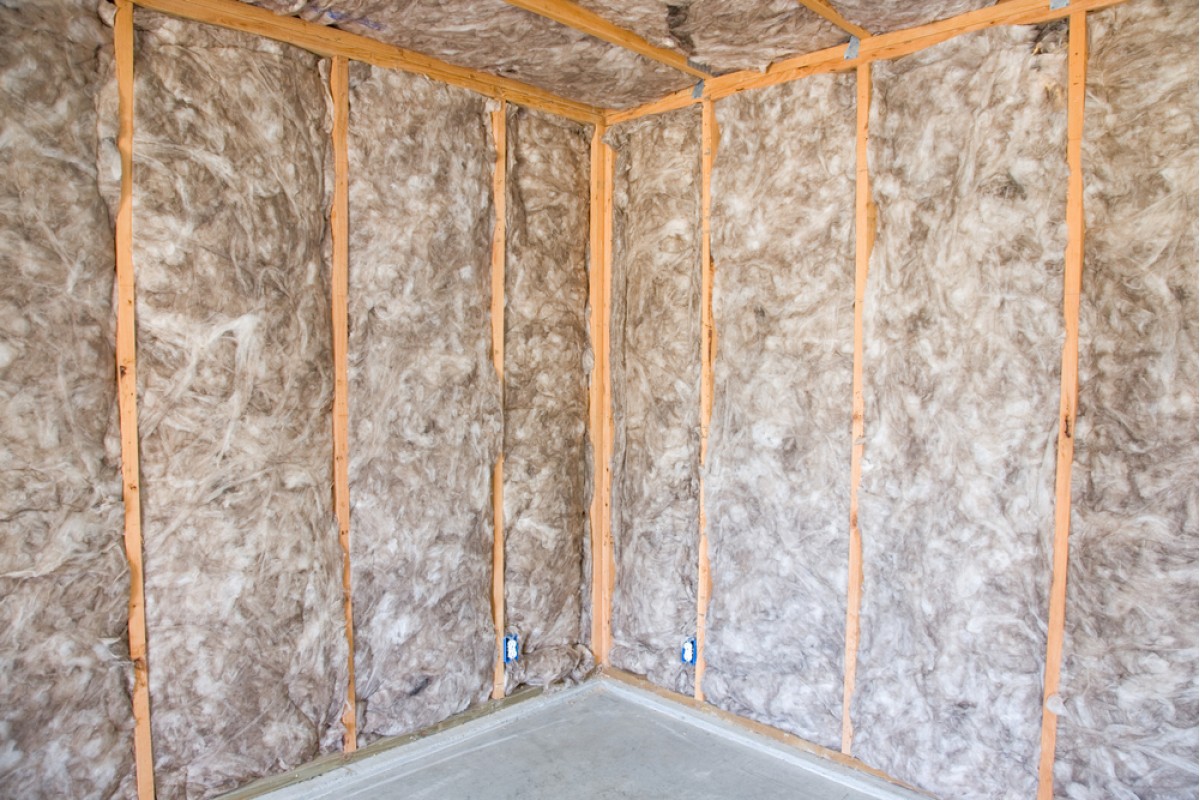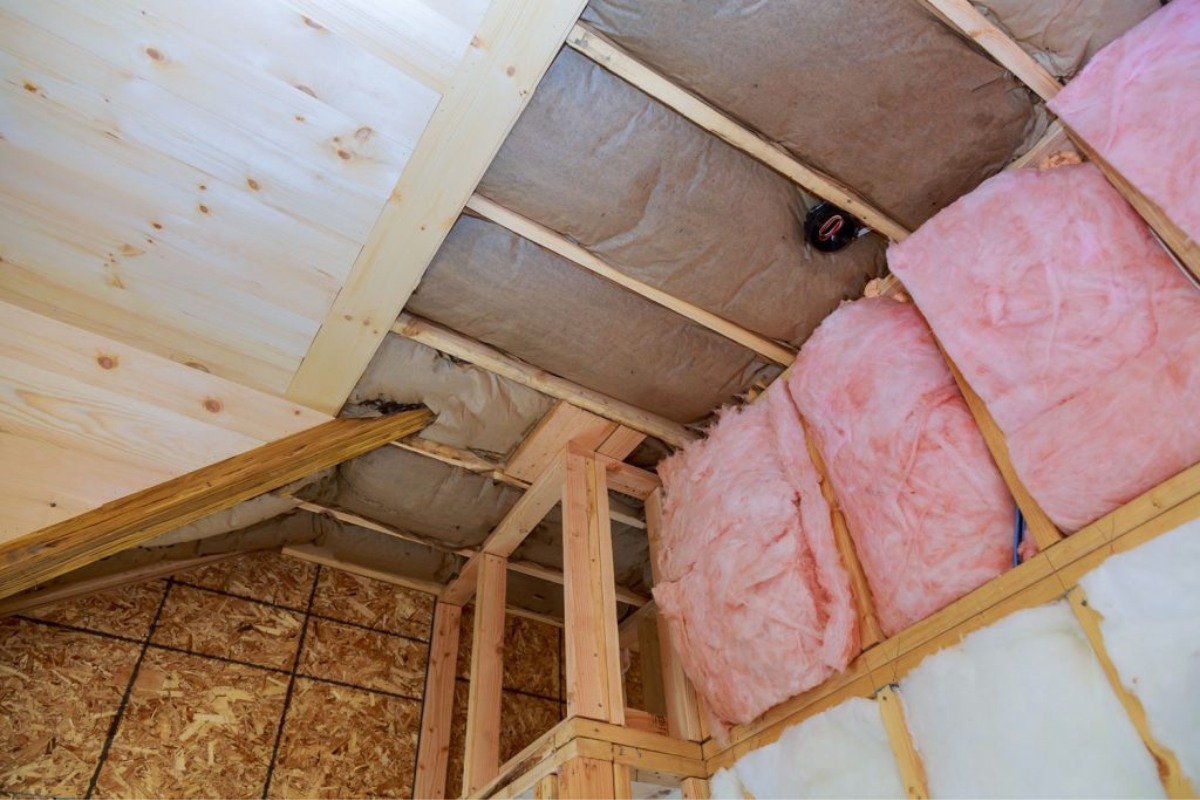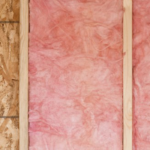
Fiberglass batt insulation is a popular choice for its affordability, but its effectiveness is completely dependent on proper moisture control. The core issue homeowners need to understand is that while the glass fibers themselves do not absorb water, the batt as a whole can trap and hold moisture that moves through air leaks. When fiberglass gets wet, its insulating R-value drops dramatically, and the damp material creates a perfect environment for mold and rot within wall cavities. Therefore, the successful use of fiberglass insulation hinges entirely on a comprehensive strategy for air sealing and vapor management.
Without these supporting measures, fiberglass can contribute to the very problems it’s meant to solve, leading to structural damage and poor indoor air quality. To avoid these costly issues, it’s important to understand how moisture interacts with fiberglass insulation. Here, we’ll cover the necessary steps for a successful installation, including the role of air barriers, vapor retarders, and proper techniques recommended by a trusted fiberglass batt insulation contractor
How Moisture Affects Fiberglass Insulation
Many people believe fiberglass is waterproof, but that’s a misunderstanding. The individual glass fibers are non-porous and do not absorb water. The problem lies in the structure of the batt itself. Fiberglass insulation works by trapping millions of tiny air pockets, and it’s this trapped air that slows the movement of heat.
When warm, humid air from inside the house leaks into a colder wall cavity, it can reach its dew point and condense into liquid water. The fluffy, web-like structure of a fiberglass batt can hold this liquid water like a sponge, leading to two major consequences:
- Loss of R-Value: The trapped air pockets become filled with water. Since water is a poor insulator compared to air, the insulation’s ability to resist heat flow is severely compromised. Studies show that even a small amount of moisture can reduce the effective R-value of fiberglass by over 40%.
- Mold and Rot: The trapped moisture wets the surrounding building materials, including wood studs, drywall, and sheathing. This creates the ideal conditions for mold, mildew, and wood rot to develop inside the walls, often going unnoticed until the damage is extensive.
Bonus Tip: Even if wet fiberglass insulation dries out, it rarely regains its original performance. The moisture can cause the batt to compress and lose its loft, permanently reducing its R-value. Any insulation that has been significantly wet should be removed and replaced.
Air Sealing and Vapor Barriers are Not Optional

Because fiberglass insulation does not stop air movement, it must be part of a larger system that does. This system has two key parts: an air barrier and a vapor barrier.
The Importance of a Dedicated Air Barrier
Most moisture gets into wall cavities by hitching a ride on leaking air. Before any insulation is installed, all potential air leaks in the building envelope should be meticulously sealed. This includes gaps around windows and doors, holes for plumbing pipes and electrical wires, and joints between building materials. This is typically done with caulk, gaskets, and expanding foam sealant. Skipping this step is one of the most common and costly mistakes in any insulation project.
Understanding Vapor Retarders
A vapor retarder (often called a vapor barrier) is a material used to slow the diffusion of water vapor through a wall assembly. Its placement is critical and depends entirely on the local climate.
Regional Guidance: In cold climates, like the Upper Midwest or Northeast, the vapor retarder must be installed on the warm-in-winter side of the insulation, directly behind the drywall. This stops warm, moist indoor air from entering the wall cavity and condensing. In hot, humid climates, like the Gulf Coast, the opposite is true; the vapor retarder should be on the exterior side. In mixed climates, the strategy can vary, so consulting local building codes is essential. Installing a vapor retarder on the wrong side of the wall can trap moisture instead of blocking it.
Alternatives for High-Moisture Areas
In parts of a home that are consistently exposed to moisture, fiberglass batt insulation is often not the best choice, even with proper precautions. These high-risk areas include basements, crawl spaces, and the exterior walls of bathrooms. For these applications, insulation materials that are resistant to moisture are a much safer bet.
Closed-cell spray foam and rigid foam boards are two excellent alternatives. Both are non-porous, do not absorb water, and will not support mold growth. They also act as an air barrier and, in the case of closed-cell foam and some rigid foams, a vapor barrier. This all-in-one performance makes them a more reliable long-term solution for damp environments, as the following comparison illustrates.
Insulation Performance in Damp Environments
| Feature | Fiberglass Batts | Closed-Cell Spray Foam | Rigid Foam Board (XPS) |
|---|---|---|---|
| Moisture Resistance | Poor (traps water) | Excellent (impermeable) | Excellent (impermeable) |
| R-Value when Wet | Severely Reduced | Unaffected | Unaffected |
| Air Sealing | None | Excellent | Good (if joints are taped) |
| Mold Resistance | Poor | Excellent | Excellent |
Things to Consider Before Making a Decision
To avoid costly mistakes and ensure fiberglass is the right fit for a project, homeowners should evaluate several key factors.
- Project Location: Is the insulation for an attic, an above-grade wall, or a basement? The moisture risk is very different in each of these locations. Fiberglass can be a good choice for properly vented attics and above-grade walls but is generally a poor choice for below-grade applications.
- Commitment to Air Sealing: The performance of fiberglass is directly tied to the quality of the air sealing. A professional insulation contractor must be prepared to invest the time and money to do this step correctly. If not, choosing an insulation that is also an air barrier, like spray foam, may be a better investment.
- Budget: While fiberglass batts have a low upfront material cost, the total project cost should include materials for air sealing and vapor control. Failing to budget for these can lead to performance issues and future repairs that are far more expensive.
- Local Climate: As discussed, the climate dictates the proper vapor control strategy. Homeowners should understand their climate zone and local building code requirements before starting.
Answering Key Questions About Fiberglass
What is the difference between faced and unfaced insulation?
Faced fiberglass batts have a paper or foil facing attached to one side. This facing typically acts as a vapor retarder. Unfaced batts have no facing and require a separate vapor retarder, like a polyethylene sheet, to be installed. The choice depends on the specific application and building codes.
Can you install fiberglass in a basement?
It is generally not recommended. Basements and crawl spaces are high-moisture environments. Even with a vapor barrier, moisture can find its way in from the concrete walls or floor. When fiberglass gets damp in these enclosed spaces, it can lead to serious mold problems.
What should I do if I find wet insulation in my walls?
The first step is to identify and stop the source of the water leak. This could be a plumbing leak, a roof leak, or condensation from air leaks. Once the source is fixed, the wet insulation and any damaged drywall or wood should be removed and replaced.
How does attic ventilation help with moisture?
Proper attic ventilation creates a continuous flow of outdoor air through the attic space. This airflow helps remove any warm, moist air that leaks up from the living area before it has a chance to condense on the cold underside of the roof deck during the winter.
Can compressing fiberglass damage it?
Yes. Compressing fiberglass to fit into a space that is too small for it reduces its R-value. The insulation’s effectiveness comes from the trapped air pockets, and squeezing it eliminates that air. Always use batts that are the correct thickness for the wall or joist cavity.
Making a Smart Insulation Choice
While fiberglass batt insulation is a cost-effective solution for many homes, its performance is conditional on being protected from moisture. Success depends on a diligent approach to air sealing, a climate-appropriate vapor retarder, and proper ventilation. For high-moisture areas like basements, homeowners will find that alternative materials resistant to water damage are often a much wiser long-term investment.
Getting Professional Insulation Advice
Navigating the complexities of moisture control and building science can be challenging. For areas prone to dampness or for homeowners looking for a high-performance solution, consulting with insulation professionals is a wise step. They can assess a home’s specific situation and recommend the best material to ensure long-term durability and efficiency.
For instance, companies that specialize in modern insulation solutions, such as Foam Worx Spray Foam Insulation, can provide expert guidance. They understand how to properly manage air and moisture and can offer alternatives like spray foam that solve these problems directly. For a consultation, they can be reached at foamworxinsulation@yahoo.com or by phone at (507) 407-0678.
Reviewer: Jacob Wright has 6 years of experience in spray foam insulation. He reviewed this content and made sure it focused on the real decisions homeowners deal with every day.


